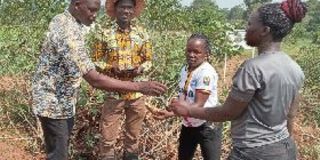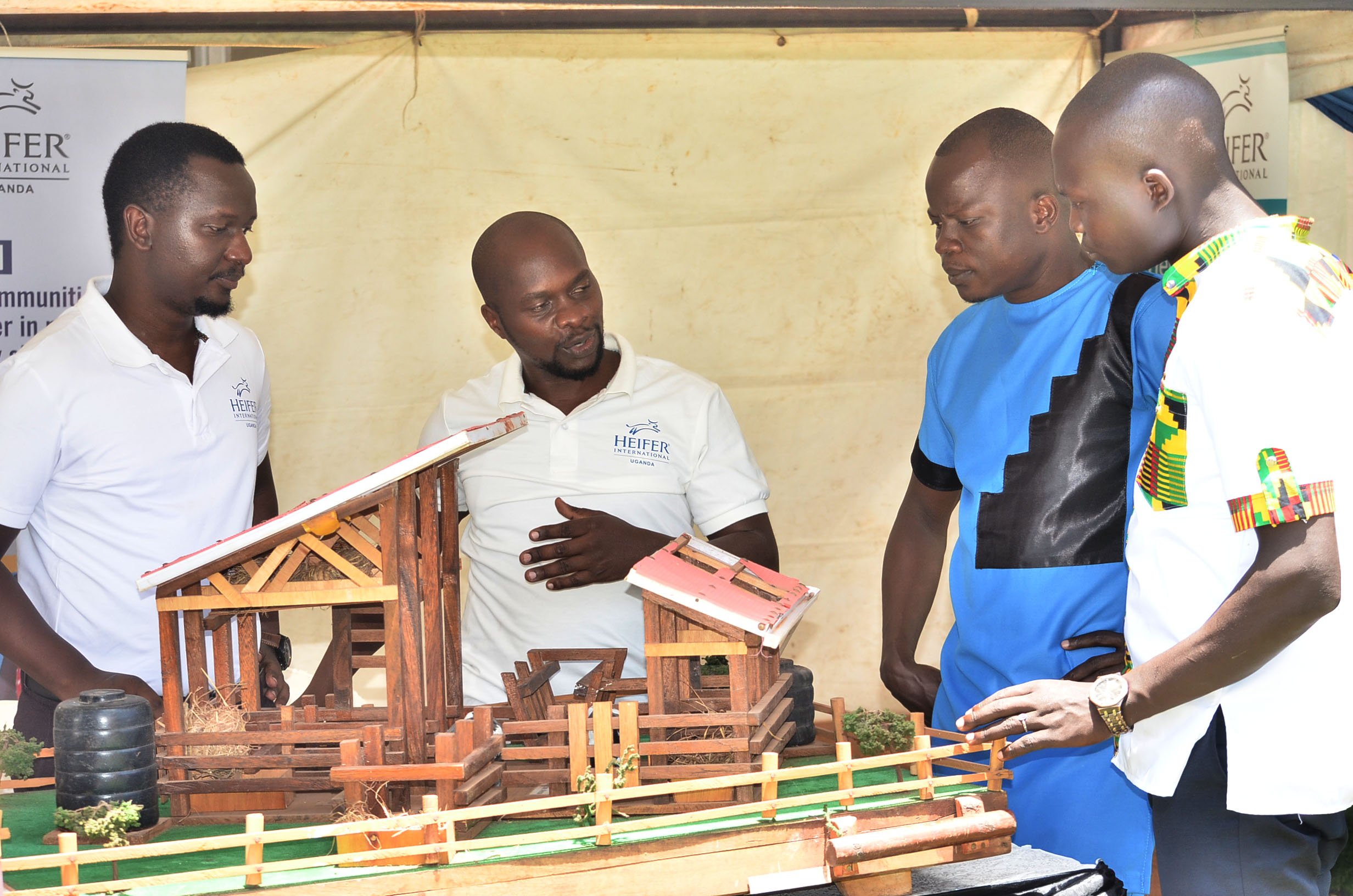Breeding will solve disease challenge

Hellen Apio (2nd right) explains how one may breed cassava using mutation. Photo | Lominda Afedraru
What you need to know:
- Control of mad honey poisoning is through abstaining from using such honey, and or consuming very small amounts, plus elimination of the Rhododendron plants.
Agricultural scientists in the country are now embracing mutation breeding to develop plant varieties and achieve attributes of their choice.
Hellen Apio, a scientist at National Agricultural Crop Resources Research Institute (NaCRRI) says they are breeding cassava and rice at the institute to obtain cassava resistant to cassava mosaic virus and brown streak virus as well tolerant to drought. They are also breeding rice varieties resistant to pests and diseases.
Background
The first scientists to use this technology were Muller and Standler in 1928. This is after they demonstrated that exposer to X-rays can cause genetic mutations to the plants especially maize and barley in the case of the two founding scientists.
During 1950-1960 several countries took up the task of crop improvement through mutation breeding approaches.
Compared to other breeding methods such as cross breeding and chemical mutagenesis, radiation mutation breeding has incomparable advantages. To date 3,355 mutant varieties of crops have been registered in the mutant data base of the International Atomic Energy Agency (IAEA) and more than 1,000new varieties have been promoted worldwide.
Best practices
Apio explains that crops provide the most basic guarantee for human survival, its domestication plays an important role in developing wild plants to produce cultivated crops through the long-term screening of desirable characteristics caused by gene mutations. However, spontaneous mutation appears at an extremely low frequency in nature rendering the process of excellent variety cultivation screening tedious.
“How to accelerate the frequency of breeding, the process has always been a key problem in crop variety development, with a long history from natural evolution to cross breeding and mutation breeding in crop breeding,” says Apio. Mutation breeding is the method of using artificial mutagenesis to obtain new biological cultivars, mainly through chemical or radiation mutagenesis. Chemical mutagenesis refers to the biochemical reaction between chemical agents and genetic material and the result is mostly point mutations in genes. Although chemical mutagenesis is effective its environmental optimisation and biological safety need to be improved.
Comparatively, radiation mutagenesis has characteristics of more complex genetic mutation and more beneficial mutant phenotype.
This approach offers the possibility of inducing desirable attributes that either cannot be expressed in nature or have been lost during evolution.
Radiation in mutation breeding
A large number of new varieties widely used in production have been bred by classical radiation mutation technology. Radiation mutation breeding is generally divided into classical radiation mutation breeding, particle mutation breeding and space radiation mutation breeding.
Classical radiation mutation breeding methods mainly include X-ray and gamma ray applications.
As a commonly used method, classical radiation mutation breeding has been proven to be useful for crop variation which mainly refers to the process of using various rays to induce a large number of genomic mutations and speed up the production of mutant traits through energy deposition directly or indirectly onto the plant’s DNA. Particle mutation breeding mainly uses accelerated particles, such as heavy-ions or protons. They have unique physical properties, such as diversified radiation parameters, complex track structure and depth dose distribution.
Accelerated particle has been considered a powerful mutagen for crop breeding because it induces excellent biological mutagenic effectiveness at relatively low radiation doses.
Source of radiation
Apio explained that scientists obtain radiation from different sources and this include cosmic radiation which obtained from space existing in the sun and stars.
The advantage of mutation breeding using gamma rays is that the time for the plant to develop naturally is reduced and it helps in creating genetic diversity for desired traits.
One plant can have traits of pest and disease resistance, high yield as well as tolerance to drought.
Cassava research
Apio says since there is no facility to expose the plant in the initial breeding process, she took a number of cassava stalk to Malaysia which has the chronic gamma green house facility. The stalk were exposed to radiation and allowed to grow in the green house. She sampled those that where growing well and brought them to Uganda where they are currently growing in the green house before they are taken to the field after four months.
The research will take about four years for the product development to be ready for release to farmers. Some of the varieties include Narocas1 and other famer preferred varieties.
Breeding
In the case of vegetative crops such as cassava on which Apio is working, the scientists usually obtain its stalk which is cut into different pieces and exposed to radiation. There will be a mixture of solution which is placed in the machine called gamma bean cell that measures the radiation amount. Since the radiation rates differ some plants will end up growing well while others will die off.




